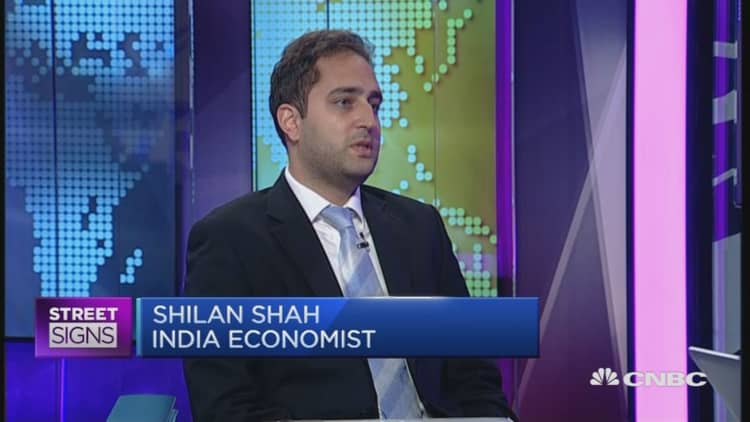India's government has set out the structure of its long-awaited goods and services (GST) tax, but economists are divided on whether opting for multiple rates is a winner or not.
Morgan Stanley economists Upasana Chachra, Chetan Ahya and Aayushi Kukreja said in a Thursday note that the aim of the GST was to reduce the inefficiencies caused by India's current tax system, by eliminating "cascading impact" and easing compliance. Cascading impact is caused by tax being levied on an item at every stage from production to sale.
On Thursday, finance ministry officials in India approved four main GST rate bands: 5 percent, 12 percent, 18 percent and 28 percent. The rates were steeper than the 6, 12, 18 and 26 percent proposed earlier by the government, according to Reuters.
In 2015, Arvind Subramanian, the chief economic adviser to the Indian government, headed a committee that examined possible tax rates under the GST. The committee recommended a two-rate structure comprising a low rate and a standard rate, but proposed that India should strive toward a one-rate structure in the medium-term.
Morgan Stanley economists called the four-tier structure a "compromise" that went against the initial objects of a GST.
"Looking at other countries' experience suggests that most have adopted a single tax rate when implementing GST." Singapore, for example, has a GST rate of 7 percent, while Australia's is set at 10 percent.
The standard rates for most items will be 12 per cent or 18 percent under the new system, while 5 percent tax rate will be for goods of mass consumption; the 28 percent rate was likely to be reserved for for consumer durables. Luxury cars, tobacco products and aerated beverages could attract a tax on top of the 28 percent to make up for potential revenue loss, according to the economists.
Having multiple rates theoretically meant there could be challenges in properly classifying certain goods under the right tax brackets and could unnecessarily complicate tax compliance, some experts warned.
But DBS economist Radhika Rao pointed out that a single rate would not be workable in the Indian economy, given its income disparity, federal system and the potential inflationary impact of the change.
"Even if tiered, this shift is likely to simplify the thicket of taxes in place now," she told CNBC by email. "Over time, incremental changes is likely to be brought about, which might lead to narrowing the number of tiers. But I don't think this will be done in haste, with a tiered yet efficient system carrying its own inherent benefits."

Goldman Sachs analysts said in a Friday note that despite some uncertainties, implementation of the GST would not put inflationary pressures on the economy.
"We found that any increase in service inflation due to the rise in the service tax rate to 18 percent from the current 15 percent would be offset ... due to the reduction in taxes on consumer goods," the analysts said, referring to Finance Minister Arun Jaitley's comments that certain goods would be re-categorized so that they were in the 18 percent bracket rather than the 28 percent one.
While setting the official rates added another milestone in the government's quest to introduce the GST by early fiscal 2017, there were aspects that could potentially delay its roll out, Rao said in a separate note on Thursday. The government must overcome "administrative hurdles," tackle infrastructure, technology and accounting issues, and educate users, she cautioned.
"A delay might not be much of a disappointment, provided attention is on ensuring the roll-out is thorough, hassle-free, efficient and without leakages," she added.


